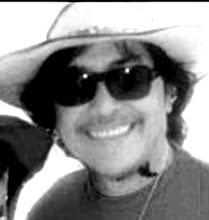Thomas Kinkade is reportedly the most collected living artist in the world, yet I am compelled by both space and time constraints to list above only two of his larger coffee-table art books. A list of all the Kinkade collections, gallery catalogues, co-authored religious inspiration books, home décor spin-offs, architectural plans, etc., ad nauseum, would match the size and content of the Asheville phone directory.
As the work of an avowed Christian, Kinkade's art has been described as being dedicated to evoking an overwhelming longing for the peace, tranquility, and light-drenched orderliness of our pre-lapsarian existence. That his artistic and moral vision has inspired exclusive planned communities and pricey golf resorts seems to be an incidental�although to Kinkade, certainly not an undesirable�achievement.
Indeed, Kinkade-inspired galleries, limited-edition prints, and gift shop-related knockoffs constitute no mere cottage industry, although he does demonstrate a marked obsession for painting quaint Tudor-style cottages.
It is the pervasive acceptance of and clamor for the materialistic manifestations of Kinkade's rather limited artistic vision�the sanctification, if you will, of his penchant for depopulated and nonsensical rural scenery�that serves to only increase the hair-lifting horror that lurks beneath his sun-dappled streams and glowing rustic manses.
Yes, horror. Horror of the worst kind, the horror wrought from juxtaposing innocuous items or idyllic surroundings with sudden ghastly consequences. The kind of thought-erasing horror that comes from watching a huge cylindrical brush used in an automatic car wash smash through your windshield. The kind of throat-parching, temple-pounding, sweaty-knees horror that comes from watching the stitched simpleton's smile on a Raggedy Ann doll suddenly gape open into a bloody drooling leer.
Do not misunderstand me, here. Kinkade's art does not evoke Clown Fear, or Marionette Fear, or Dick Cheney Fear, or Disney Audio-Animatronic Fear�I'm talking about that Mother of All Fears: When Paradise Turns into Hell.
For this Halloween, if you want to scare the dickens out of discerning adults and impressionable children, forget about the works of Poe, King, or Koontz.
Just take a good look at the artwork of Thomas Kinkade.
Upon close examination, Kinkade's rural dystopias appear to possess the following common themes:
1) Hellish glow seen emanating from every closed window to every sealed-up cottage, clocktower, inn, horse barn, church, etc. All of Kinkade's structures seem consumed from within by raging infernos. What might be laughed off as artistic excess suddenly trickles icily down your spine when you realize that Kinkade's rustic incinerators are operating at full tilt regardless of the time of day, prevailing weather conditions, and the particular season depicted in the painting!
2) All of his structures bear multiple chimneys that are exhaling thin, vertically-stretched spires of exhaust smoke which are indicative of extremelyhot fires within, and of virtually no air movement without. Again, these chimneys are operating in all seasons and weather conditions. Why are the fires burning so hotly all the time? What's cooking? You don't want to know!
3) There is an inexplicable absence of people, despite the presence of livestock, abandoned agricultural implements, raging chimney fires, what have you. In Kinkade's peaceful landscapes, it seems as if a sort of aestheticically-directed neutron bomb had detonated, leaving standing only the charming buildings, bucolic beasts and majestic landscape
There is something terrible going on in these paintings.
Yet millions of consumers seem drawn, moth-like, to Kinkade's infernal little countrified scenes, nevertheless.
Of course, it is tempting to cast Kinkade, a/k/a `Painter of Light,� in a Lucifer-like role (remember, Lucifer in Latin means `light bringer�). Yet a more compelling explanation for the incongruous elements in his deceptively warm and fuzzy-feeling art is that Kinkade has placed them there deliberately, and that it is not Kinkade's evil that so many people are attracted to, but rather their own.
That is to say, then, that Thomas Kinkade's art might be completely misunderstood, and that the sheer audacity and brilliance of his cunningly-wrought moral didacticism has been completely ignored.
Kinkade could possibly be our Dante, with limited editions available now on eBay; our Brueghel, hidden in the back ofSouthern Living, experienced only while you are at the dentist's office, idly flipping through the magazines.
Like Hieronymous Bosch, Kinkade's religious fervor seems to revel in the hell-bound procession of contemporary sinners, but unlike the 15th century artist, Kinkade does not resort to fantastic monsters or gruesomely apocalyptic scenes to depict their perdition. Rather, Kinkade's genius lies in both his understanding and rendering of contemporary human frailty in terms of the lurid, irresistible appeal of idealized real estate. For Bosch, it was the bubble-bosomed, jewel-laden temptresses and the winged demons with fish eyes and spiked tails swinging mowing-scythes who represented the driving forces behind Renaissance depravity. For Kinkade, the ultimate context for modern evil is the seemingly static, wholly-controlled, wholly-contrived resort environment that attempts to evoke a pre-lapsarian perfection yet with all the amenities: a bed and breakfast Eden where NO OTHER PEOPLE can interfere with one's vacation. Kinkade traps us within our own vanity and illusions, and then begins burning down the quaint little houses. The Puritan preacher Jonathan Edwards would have sinners clenched fast in the hands of an angry god. Kinkade would have them locked inside thatched roof stone cottages, begging pyromaniac realtors and resort managers for mercy that never comes.
And in the comfy painting, the horses graze on, indifferent to the screams hurled against the stone walls and the rosy windows shut fast for eternity. Maybe those aren't even horses in Kinkade's `A Perfect Summer Day��they're Centaurs! And this time, Virgil the Caretaker isn't around to guide you safely through the pastoral Inferno that Thomas Kinkade, the `master of light,� has cleverly created.
Happy Halloween, folks!
Old Grendel subscribes to the "dinosaurs make everything better" theory. Of course it's not really theory anymore, is it?
Here comes Unkempt and his ostrich autopsy obsession.

No comments:
Post a Comment